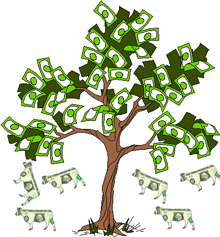How do the markets generally do in November following great losses in October? 
The answer isn’t good news, unfortunately, the losses tend to continue. Here’s an analysis posted by Barry Ritholtz at The Big Picture.
Novembers in the Market
Excerpt: Dan Greenhaus is with the Equity Strategy Group of Miller Tabak + Co. He put out this fascinating analysis of what "Novembers" typically hold in store for us after nasty "Octobers"
Dan writes:
Okay, so we all know October was down a fantastically ugly 16.94%, the steepest decline since 1987 when that October declined 21.76%. Going back to 1950, there have been 23 years in which October has been down by *any* amount from the prior September for an average decline of 3.15%. Subsequent to those 23 years, the following November saw an average gain of exactly 1%, while the following two months, at the end of December, saw gains of a much more substantial variety; up 3.54%. But of course the decline in this past October was outsized in comparison to the average October decline, so let’s narrow this down a bit. Using only instances in which October saw a decline of 3% or more (eight such instances), the average gain at the end of November was 1.67% while the average gain at the end of December was 3.70%. To a degree, this is not entirely surprising as one would assume that the steeper decline would lead to a steeper rebound. But in most of those instances, the decline was relatively modest. As I said, those 23 declines averaged about 3.15%, a far cry from October 2008. The only analogous decline was the drop in October in 1987 which led to a subsequent 8.53% drop in November 1987.
More here.


